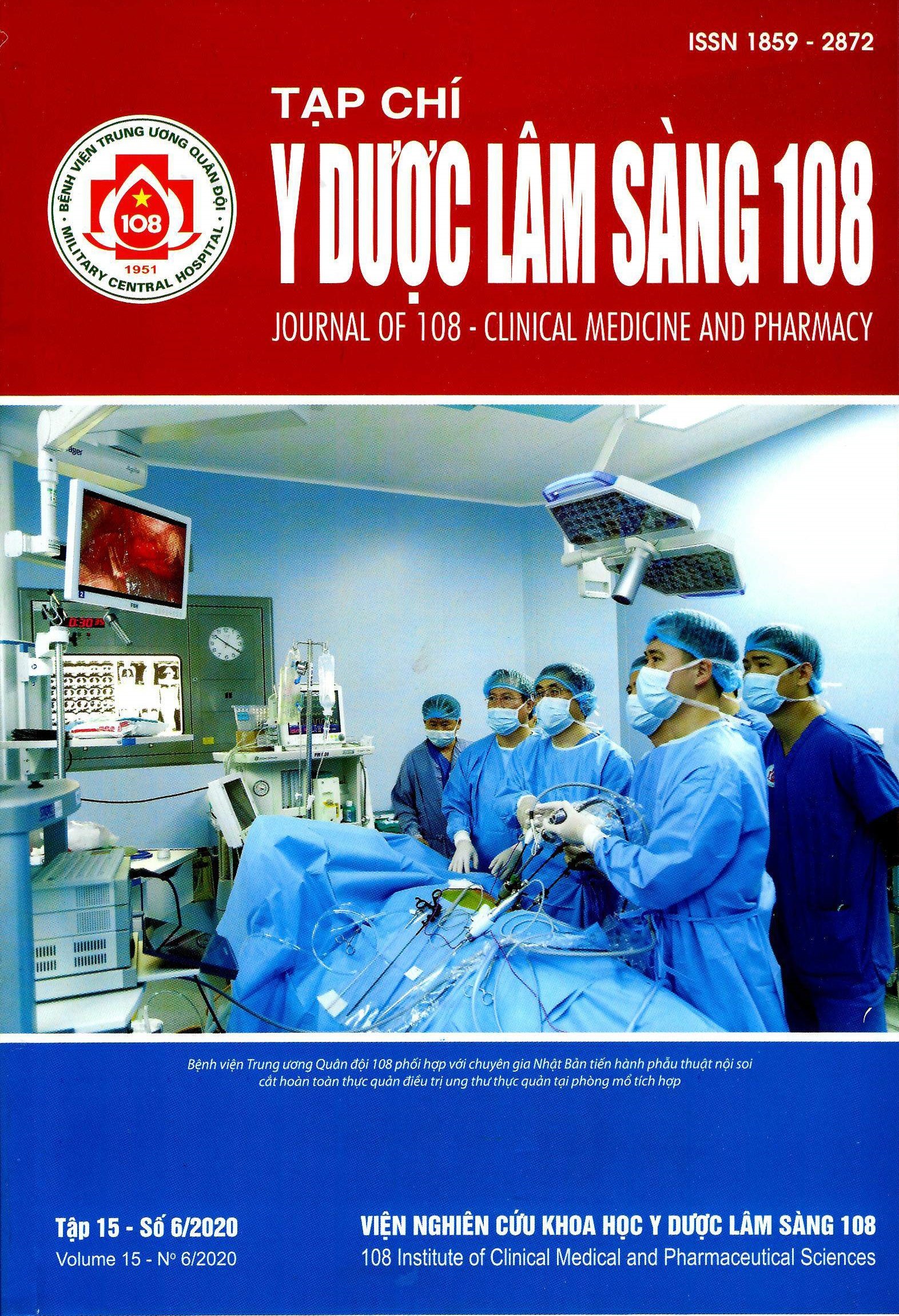Clinical, bacterial classification and resistance rate in patients cholangitis with septic complications
Main Article Content
Keywords
Abstract
Objective: To determine clinical features, classify bacteria and drug resistance rates in patients with cholangitis with complications of sepsis. Subject and method: A prospective and retrospective study in 110 patients with cholangitis with complications of sepsis. All patients were given blood transplants, identified bacteria and susceptibility of antibiotic at the Department of Microbiology - 108 Military Central Hospital, from March 2015 to November 2019. Result: From February 2015 to November 2019, 110 patients were identified with sepsis due to cholangitis. The mean age was 63.2 ± 15.9. Number of patients > 65 years old was 63/110 (55.3%). Men (58.8%) and women (37.7%). Causes of cholangitis: Gallstones (55.3%), cancer of the bile ducts (39.5%), benign stenosis (1.8%). Bacteria classification: Gram-negative infections: 110/110 (100%), in which: E. coli (60.5%), and K. pneumoniae (19.3%). There were 4 types of antibiotics sensitive to bacteria (susceptibility over 80%) including: Ertapenem, imipenem, meropenem and amikacin. Conclusion: The percentage of patients infected with sepsis caused by gram-negative bacteria accounted for 100%, in which E. coli (60.5%), K. pneumoniae (19.3%). Antibiotics effective in treating patients with cholangitis with complications of sepsis include: Ertapenem, imipenem, meropenem and amikacin.
Article Details
References
2. Harumi Gomi et al (2018) Toyko guidelines 2018: Antimicrobial therapy for acute cholangitis and cholecystitis. J Hepatobiliary Pancreat Sci 25: 3-16.
3. Claesson BE, Holmlud DE, Matzsch TW (1986) Microflora of the gallbladder related to duration of acute cholecystitis. Surg Gynecol Obstet 162: 531-535.
4. Shimada K, Noro T, Inamatsu T et al (1981) Bacteriology of acute obstructive suppurative cholangitis of the aged. J Clin Microbiol 14: 522-526.
5. Hafif A, Gutman M, Kaplan O et al (1991) The management of acute cholecystitis in
elderly patients. Am Surg 57: 648-652.
6. Yusoff IF, Barkun JS, Barkun AN (2003) Diagnosis and management of cholecystitis and cholangitis. Gastroenterol Clin North Am 32: 1145-1168.
7. Michael J Englesbe et al (2005) Resistant pathogens in biliary obstruction: Importance of cultures to guide antibiotic therapy. HPB (Oxford) 7(2): 144-148.
8. Ban Seok Lee et al (2013) Risk factors of organ failure in patients with bacteremic cholangitis. Digestive Diseases and Sciences 58(4): 1091-1099.
9. Melzer M et al (2007) Biliary tract infection and bacteraemia: Presentation, structural abnormalities, causative organisms and clinical outcomes. Postgrad Med J 83: 773-776.
10. Kuo CH, Changchien CS, Chen JJ et al (1995) Septic acute cholangitis. Scand J Gastroenterol 30: 272–275.
11. Health Protection Agency (2004) Laboratory detection and reporting of bacteria with
extended spectrum beta-lactamases. National Standard Method QSOP 51(2). London: Health Protection Agency.
12. Seiki Kiriyama et al (2018) Tokyo Guidelines 2018: diagnostic criteria and severity grading of acute cholangitis. Japanese Society of Hepato Biliary 25(1): 17-30.
 ISSN: 1859 - 2872
ISSN: 1859 - 2872
